Street Fighter 6 was made for someone like me. I’ve been a casual fan of the Street Fighter series since I was a kid playing the Street Fighter 2 arcade machine in my local store. I still listen to the Street Fighter 3 soundtracks from time to time, own multiple versions of Street Fighter 4, and currently play Street Fighter: Duel on my phone. So it was unfortunate that Street Fighter 5 was a mess at launch; the online experience was rough, and it didn’t even have a practice mode at the time. This turned off a lot of players (including me) right from the start, so though Capcom fixed some of the game’s problems over time, it still had trouble keeping pace with the popularity of Street Fighter 4.
In response, Capcom has put everything into Street Fighter 6, and the effort shows. The flashy graphics and funky-fresh presentation are fantastic, and the game has had multiple betas and events to test servers and get user feedback. Most of all, SF6 leans heavily on approachability, with numerous ways for new players and casual fans to enter the game, choose the controls they want to use, and learn how to play their favorite characters properly. At the same time, the Drive Gauge system has enough complexity for expert, tournament-level players to appreciate. On top of that, World Tour mode is effectively a “Street Fighter RPG” that is a full-on Yakuza-style game that can last well over 40 hours. All told, Street Fighter 6 is truly special and is, hands-down, the best fighting game I’ve ever played.
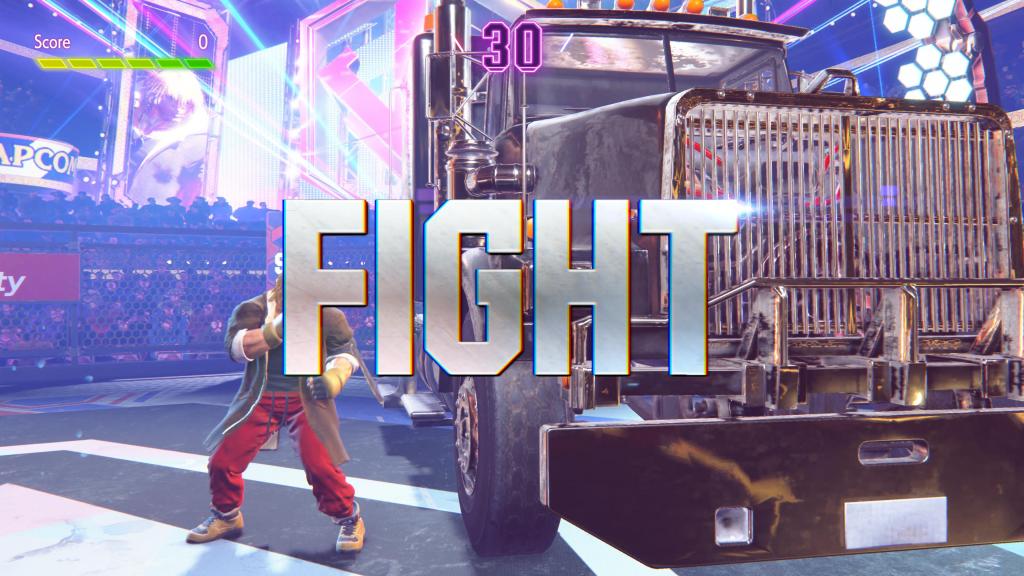
Approachability in Street Fighter games has always been a rather touchy subject. Fighting games are primarily based on skill, particularly in the context of ranked PvP matches either online or in-person at various esports tournaments, such as EVO and Capcom Pro Tour. So, making a Street Fighter game more approachable is seen by some players as shorthand for oversimplifying the gameplay and controls. On the other hand, not every fan of the series is someone who aspires to be the next great EVO champion, and providing more reasons for more people to pay for a game in a genre that can be intimidating to approach and learn is never a bad idea. Fortunately, Street Fighter 6 shows that it’s possible to be both approachable and competitive without having to necessarily trade one for the other.
First off, the game allows players to choose among three different control schemes, with Modern and Classic being allowed for online play. If you’re a Street Fighter veteran, the Classic setting is as it sounds and requires all the circular and charge inputs with the traditional six-button setup. The Modern setting plays similarly to the control scheme of Super Smash Bros., with special moves and Super Arts mainly assigned to a single button and a directional input.
The main benefit of Modern controls is that you don’t have to do tricky circular movements, like the double full-circle input for Zangief’s Bolshoi Storm Buster, and you can throw out charged moves, like Guile’s Sonic Boom, with more ease and consistency. The downside, though, is that the command list in Modern controls can lose a few unique attacks, and you can’t control the strength of some special moves using different strength inputs. Despite this loss of subtlety, both Modern and Classic are viable for competitive play, so it’s up to you which one suits you most.
The third control scheme, called Dynamic, is available in offline modes and allows players to throw out cool moves with the press of a button. On this setting, you can mash buttons and probably scrape through Arcade Mode on normal difficulty. More to the point, it allows your friends who may have little or no experience with fighting games to pull off sick moves without having to do a single quarter-circle. Combined with Extreme Battle, which is a low-key party mode that can have bulls running and bombs detonating across the screen, a group of players can have a blast without having to take the game all that seriously.
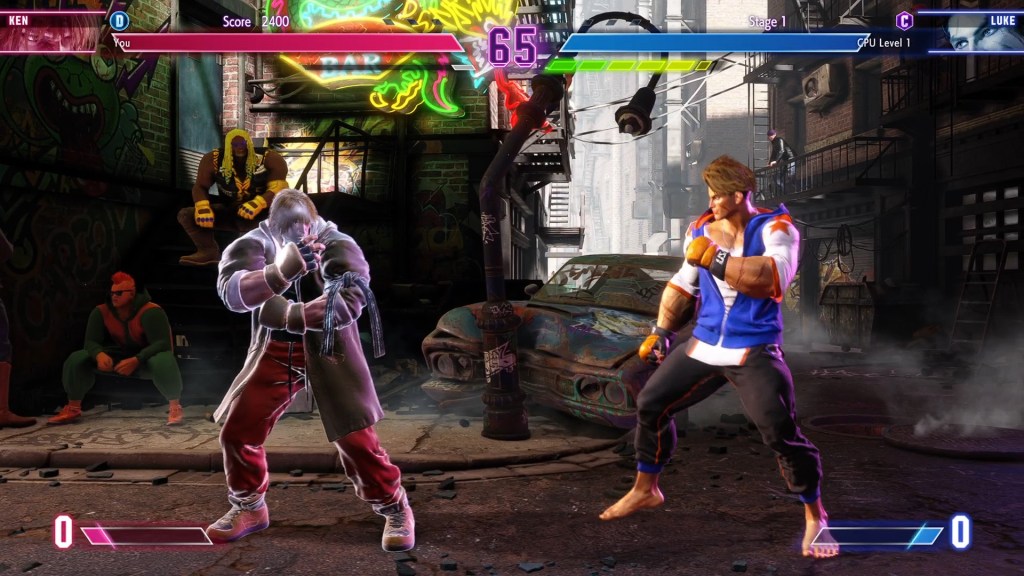
Any player who wants to learn more about Street Fighter 6’s combat system can pour through the straightforward explanations provided in the Tutorials section, which breaks down the intricacies of the Drive system in easy-to-follow steps. The Combo Trials help as well in getting you accustomed to trickier juggles, some of which are more useful than others, given that a few of them have very small timing windows. Beyond that, the new Character Guides for each fighter are far more thorough in explaining the fighter’s strengths and playstyle, particularly when it comes to spacing and proper setups. They will show you a list of basic, intermediate, and advanced techniques and allow you to stop the guide to try them out for hands-on experience.
Beyond that, understanding how to use the fighting system’s flexible Drive Gauge will be one of the foundations for top-tier play, be it in tournaments or Diamond Rank matches. If you’re already comfortable with how Focus Attacks (and FADCs) work in Street Fighter 4 and how V-Shifts and V-Reversals work in Street Fighter 5, the Drive Gauge will feel familiar. The gauge has a lot of utility for both offense and defense, but because of this, it’s easy to drain the meter prematurely if you’re too greedy. It’s used as the resource for powered-up special moves called Overdrive attacks, the Drive Reversal that can counter most moves, the Drive Parry that allows you to block almost anything apart from throws, and the Drive Rush that can extend combos out of cancelable moves. The Drive system has a ton of technical subtleties and will require that players practice quite a bit in order to unlock its full potential.
More importantly, the Drive Gauge rewards assertive engagement and forward momentum. Blocking continuously drains the meter, while normal attacks recover it regardless of whether they hit or are blocked. Running out of Drive Gauge puts the fighter into Burnout, a dangerous state where special moves and super arts can deal chip damage, counterattacks come out slower, and an opponent’s Drive Impact can knock you into a stun (and at that point, you can kiss your health bar goodbye). Watching how top-tier players manage the Drive Gauge while they poke opponents in the neutral game and perform multi-hit combos from different positions is well worth learning.
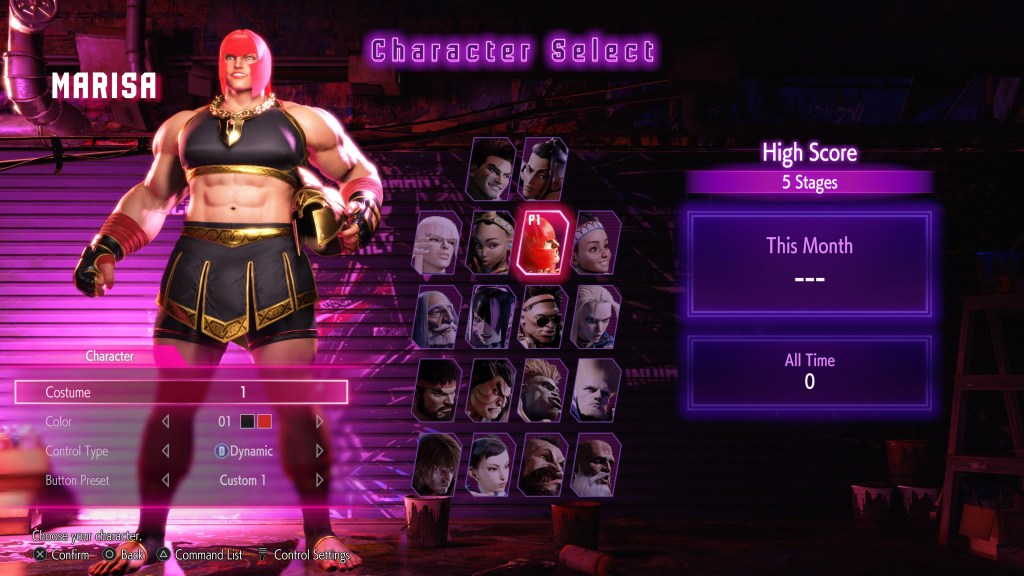
Street Fighter 6’s starting roster has a solid mix of 18 fighters, with a third of them being new fighters. A few of the rookies have ties to past Street Fighter characters, like the cheerful Lily following in the footsteps of T. Hawk, the streetwise ninja Kimberly learning Bushinryu from Guy, and the drunken kung fu master Jamie being a prodigy of Yang and Yun. The French judoka Manon is similar to Abel but incorporates balletic techniques into her moves, while the hulking gladiator Marisa has a lot of hard-hitting special moves and enormous muscles that would make Zangief blush.
Last but not least is the new villain, JP, a towering cane-wielder and an interesting trap character who uses the same Psycho Power energy that M. Bison and Juri have to keep his opponent away from a distance. Of course, many of the classic combatants like Ryu, Ken, Chun-Li, Blanka, E. Honda, and Dhalsim return more or less how fans expect, with a special nod to Cammy, who has been given a lot of combo potential. That said, there’s a lot of room for the roster to expand in future seasons, and both Arcade and World Tour modes provide hints on who they could be, including Sodom, Fei Long, Elena, and Dan just to name a few.
On that note, Arcade Mode also plays as expected, though this version in SF6 gives you the option to play it in either five or 12 rounds. Each character’s journey through this mode provides a few cutscenes, many of which expand upon the general story of Ken Masters being set up by an incident in Nayshall.
Meanwhile, the Battle Hub offers a venue for online matches with rows of mock arcade machines to set up a round or two. In between bouts, you can watch other matches live or wander over to the classic arcade area to play old-school Street Fighter and Final Fight games. If you want to head straight into a ranked match, you can skip the Battle Hub altogether and queue for a session through Fighting Grounds. I was able to test out the online portions of the game for several days, though the latest open beta is probably a far better measure of how online play will work, given the higher amount of user engagement. At any rate, I found sessions to be rather smooth, and it didn’t take long to hop into a match. Barring any issues with server load, the online experience seems like it will run well at the game’s launch.
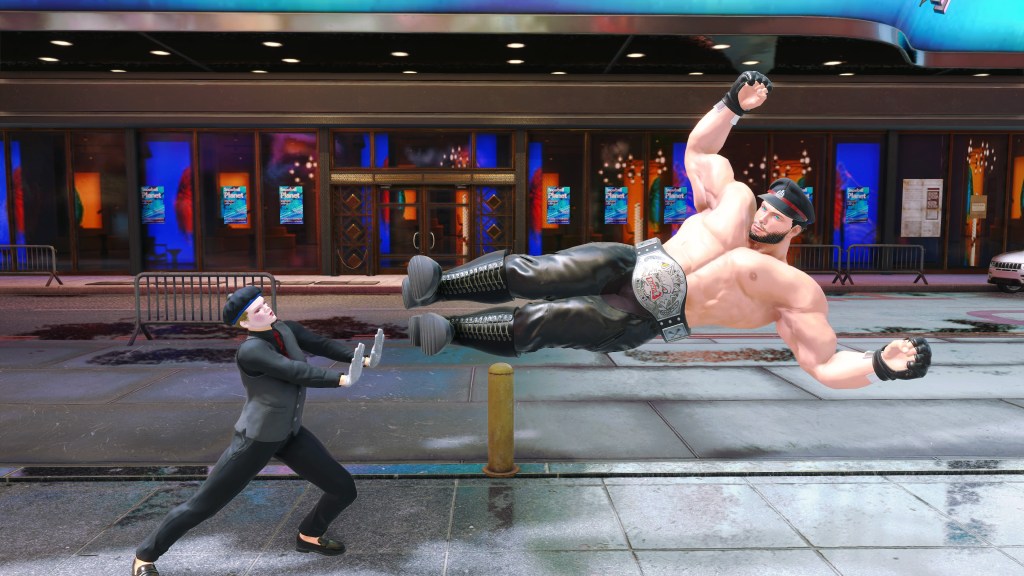
I could quite frankly write another full-length review just on World Tour mode given its wealth of content. As I intimated earlier, this adventure is comparable to a full-fledged Yakuza game. It has a story with 15 chapters, plenty of side missions, more than several side jobs, and even post-game quests. Ever since Street Fighter Alpha 3’s World Tour mode, I have dreamt about what the series could do with an open-world RPG set in the game’s universe. And apart from a few quibbles, SF6’s World Tour delivers more than I could have hoped for.
This mode has you create a character from scratch using the surprisingly robust avatar creator and go on a journey around Metro City and the world at large to become a true street fighter. You start off as a student training under the MMA fighter Luke alongside your fellow pupil and rival Bosch, who eventually gets himself into trouble. Along the way, you’ll meet numerous legendary masters, who are effectively all of the characters on the roster, and potentially learn all of their special moves and Super Arts. So, if you’ve ever wondered what a character with Zangief’s Screw Piledriver, Ryu’s Shoryuken, Guile’s Sonic Boom, and Ken’s Shinryu Reppa would be like, this is your chance to build it. (And outside of Avatar Battle, you won’t need to worry about custom characters in online matches.)
The path from a Level 1 rookie to a Level 99 legend is an arduous one, but there’s plenty to explore along the way. Metro City is full of goons like the Mad Gear Gang from Final Fight and pretty much everybody walking down the street is up for a match. As you progress through the story, you’ll eventually unlock the western part of Metro City and earn flight tickets to other parts of the world.
If that wasn’t enough, there’s a whole additional open-world area like Metro City that you’ll unlock as well. Various stores sell a wide variety of clothes that will boost stats and provide perks, while skill points you earn at every level can be used to improve stats further and add slots for more special moves. Thankfully, the skill tree also unlocks the ability to create a gear appearance, so that you can customize how you look without needing to worry about equipment stats.
Over the 65 hours it’s taken me to complete the story and fully learn every master’s style, I was surprisingly never bored. I reached distant platforms using Chun-Li’s Spinning Bird Kick. I defeated waves of Mad Gear flunkies on the Metro City subway trains. I nearly had my teeth kicked in by a gang of masked marauders until I summoned Guile to rescue me. I spent hours smashing vehicles into bits in Scrap Heap and parrying basketballs in Ball Block Blitz. I bought cool gifts for my masters, like video games for Luke and ultra mild instant curry for Dhalsim. I learned more about each fighter’s backstory and how they fit into the Street Fighter world. And I took pictures of cats because Cammy told me to.
However, World Tour is too easy. Not only will you earn miles that can be used as continues if you fall, but you can carry heaps of items for buffs and recovery during a battle. You can also do a lot of damage before a battle begins just by attacking an NPC with a piledriver. This low difficulty setting was probably intentional to some degree, because the mode is partially framed as one very long tutorial with multiple lessons on how the fighting system works. But a more challenging option for veteran players, perhaps by limiting items in a match and increasing the overall CPU difficulty, would make combat in this mode less of a cakewalk. At the end of day, World Tour is an incredible start for a Street Fighter RPG, but compared to other open-world games, it still has room to grow in terms of the story and visuals.
Street Fighter 6 Review: The final verdict
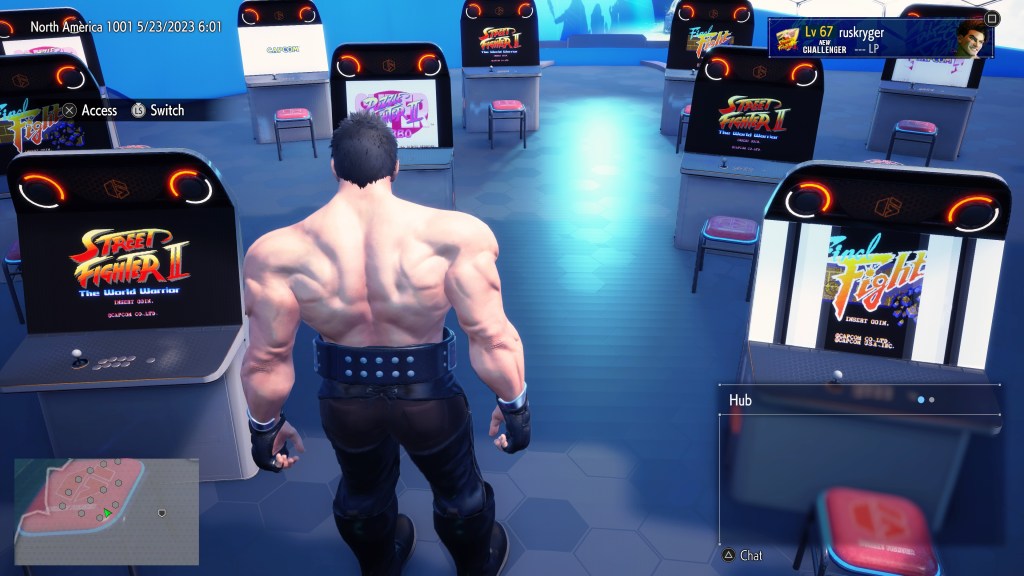
Street Fighter 6 simply lives up to the hype. From its smooth graphics and fresh presentation to its approachable controls and intricate fighting system, pretty much everything is on point. Not only is the Battle Hub a fantastic multiplayer venue for online play, but World Tour is a revelation. It’s clear Capcom has learned many lessons from Street Fighter 5 and has poured everything it could into this sequel. And in today’s age of modern, live-service gaming, it’s rare to see a game like this come out of the gate swinging with tons of content. In what marks a triumphant comeback for the series, Street Fighter 6 sets a new standard for all future fighting games to come.
- Accessible to casual and veteran players alike
- Easy to learn, hard to master
- World Tour is a full-fledged Street Fighter RPG
- Fresh style, music, and presentation
- World Tour could have an optional higher difficulty setting
Disclaimer: This Street Fighter 6 review is based on a PS5 copy provided by the publisher. Reviewed on Ver 1.000.000.
The post Street Fighter 6 Review (PS5): Shin Shoryuken appeared first on PlayStation LifeStyle.
from PlayStation LifeStyle https://ift.tt/gXZQVsH
No comments:
Post a Comment